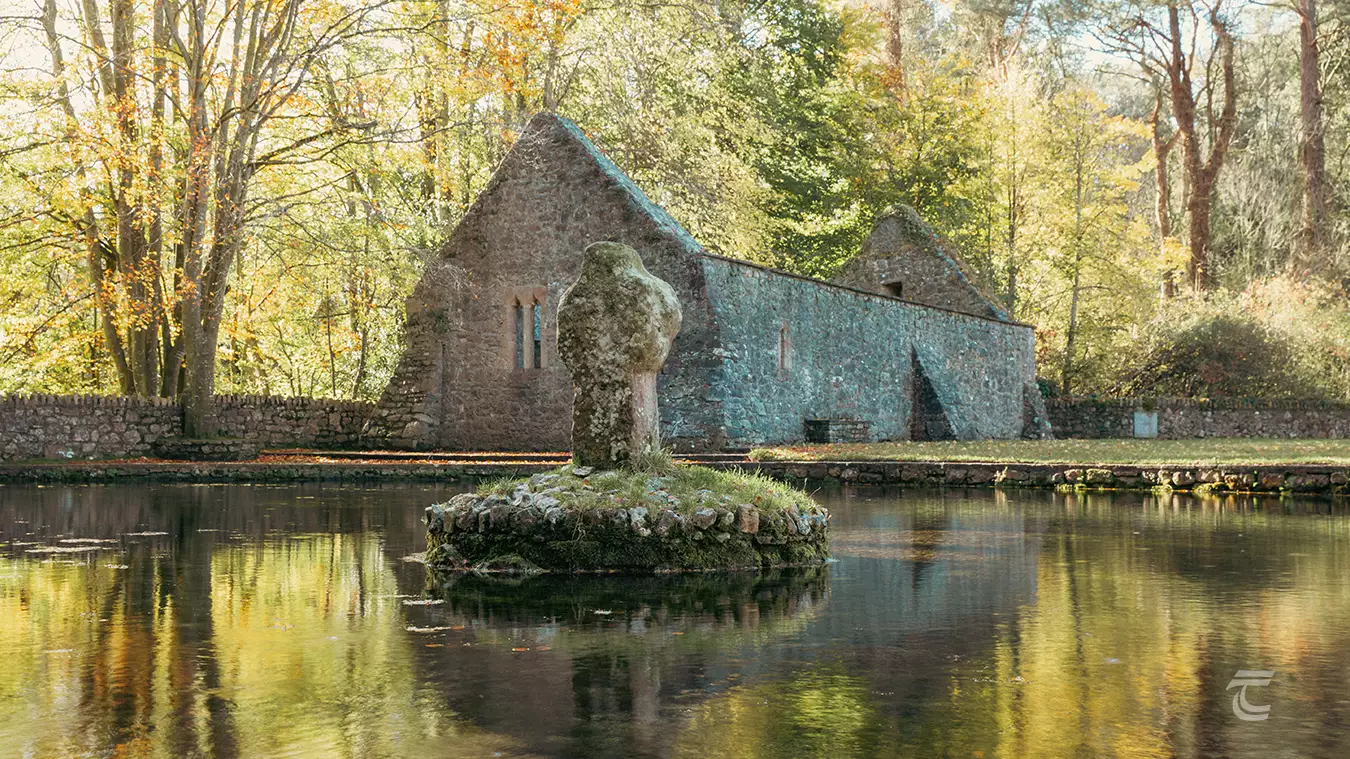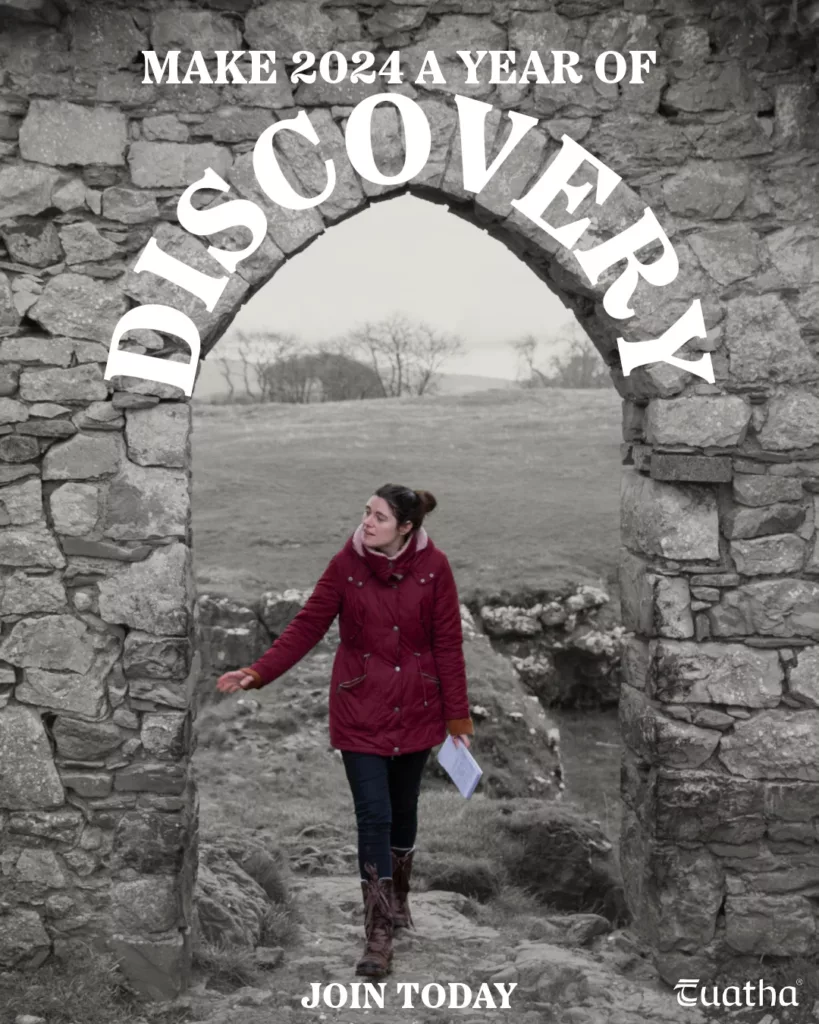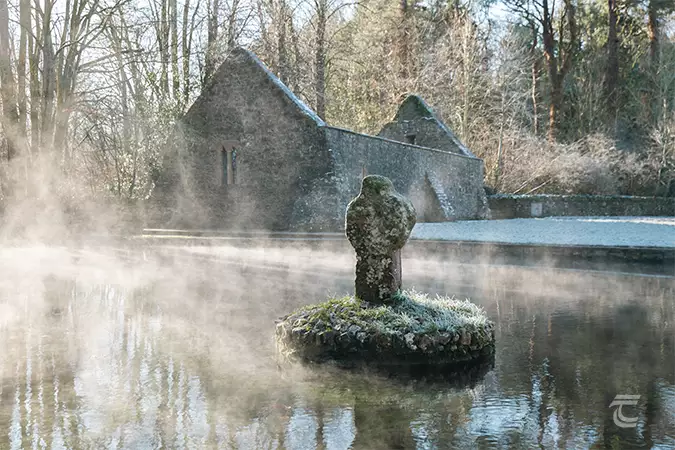St Patrick’s Well
St Patrick’s Well is situated in a tranquil valley to the west of Clonmel, close to the village of Marlfield in County Tipperary. It is a picturesque setting for this holy site, which has been revered for centuries. There are over 3,000 holy wells in Ireland and St Patrick’s Well is thought to be one of the largest. Holy wells are sacred places where natural springs or man-made hollows that collect water are thought to have a religious significance because of their association with a saint. Many are thought to have been originally places of pre-Christian worship and tradition which were then co-opted as Christian sites following the conversion of the local population.
Legend has it that St Patrick stopped off at this valley on his journey through South Tipperary and Waterford where he reputedly converted the King of Munster to Christianity at the Rock of Cashel. St Patrick was said to have stopped here to bathe and baptise local people. Unfortunately, however, it is unlikely that Patrick was ever in this part of Ireland, as he does not mention travelling to the south of the country in his writings Confessio or Epistola. In fact, the story of Patrick’s journey in Munster comes from a source written nearly 500 years after Patrick’s death, the 10th-century Life of St Declan. Despite this, St Patrick’s association with the well is still strong today.
The well has been enclosed by a circular wall. The natural water which bubbles up is channeled through two narrow stone cut openings that appear to be possible flumes from an early medieval mill. The water descends into a large, shallow pool, from where it flows into a narrow stream, a tributary of the River Suir, which flows nearby to the south of the site.
A small sandstone cross stands on a small island in the pool, and this is probably one of the oldest visible archaeological features at St Patrick’s Well. This cross is thought to date to the 8th century. It was originally positioned close to the church on marshy ground, but a programme of renovation and reconstruction was carried out at this site in the 1960s and the cross was moved to its current position.
The roofless ruin of the stone church is likely to date to the 15th or 16th century. There is a historical record of the Abbot of Inishlounaght being buried at the church in 1617. Inislounaght was once a thriving Cistercian abbey that was founded in the 12th century nearby at Marlfield, but there are no traces left of it today. However, some architectural fragments may have been brought from the abbey to St Patrick’s Well and incorporated into the parish church. Within the church you can see some architectural fragments and an altar tomb dating from 1622, dedicated to the White family.
For practical information about visiting this site Click Here

The stone cross and church of St Patrick’s Well • Tipperary
The Folklore and Folk Belief of St Patrick’s Well

The stone cross at the centre of the pool at St Patrick’s Well • Tipperary
Like many holy wells around the country, St Patrick’s Well is said to have many curative properties in local belief and folklore. It is said that by drinking the water from the well or even washing in it, ailments like sore lips, sore eyes and many other chronic diseases can be cured. Indeed, it is thought that this well has miraculous properties as the water which flows through it never freezes. This is more likely owing to the well being sited over natural springs that maintain a constant temperature.
The National Folklore Collection has a number of stories of miracles and cures, including one about a crippled boy who was cured, and other people who have had their sight restored by the waters. A particularly interesting tale describes how one man mocked two others for praying at the well, and threw one of their dogs into the water. For this disrespectful act he was cursed – he lost the power of speech and could only bark thereafter.
The well was completely remodelled in the 1960s, as described by our friend Louise on her great website, Pilgrimage in Medieval Ireland. A number of stations were added around the site, to continue a tradition of pilgrimage that had peaked in the 18th and early 19th century. The well and the grounds are beautifully kept by dedicated local man, Dave, who you can meet in this short video by Tipperary Tourism.

The stone cross at the centre of the pool at St Patrick’s Well • Tipperary
Upper left: an aerial view of St Patrick’s Well • Lower left: the cross and church on a misty winter morning • Right: a 1950s statue to St Patrick
Top: an aerial view of St Patrick’s Well • Middle: a 1950s statue to St Patrick • Bottom: the cross and church on a misty winter morning
Explore more sites in Ireland’s Ancient East



